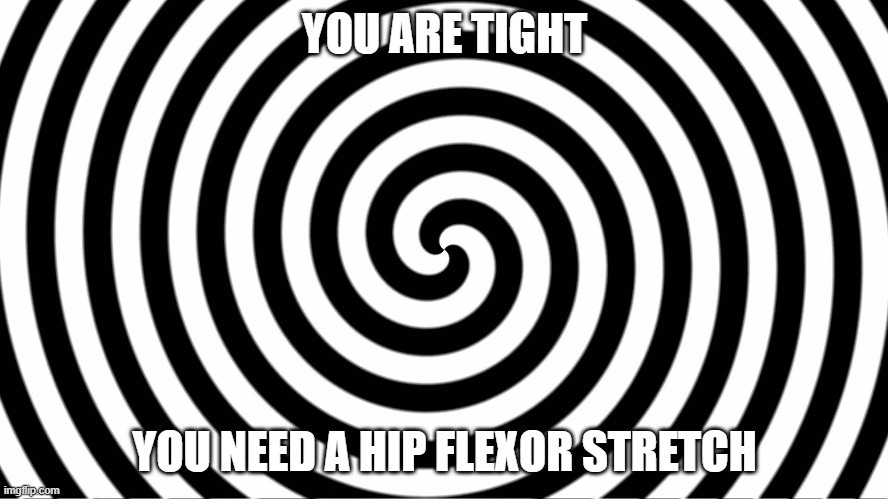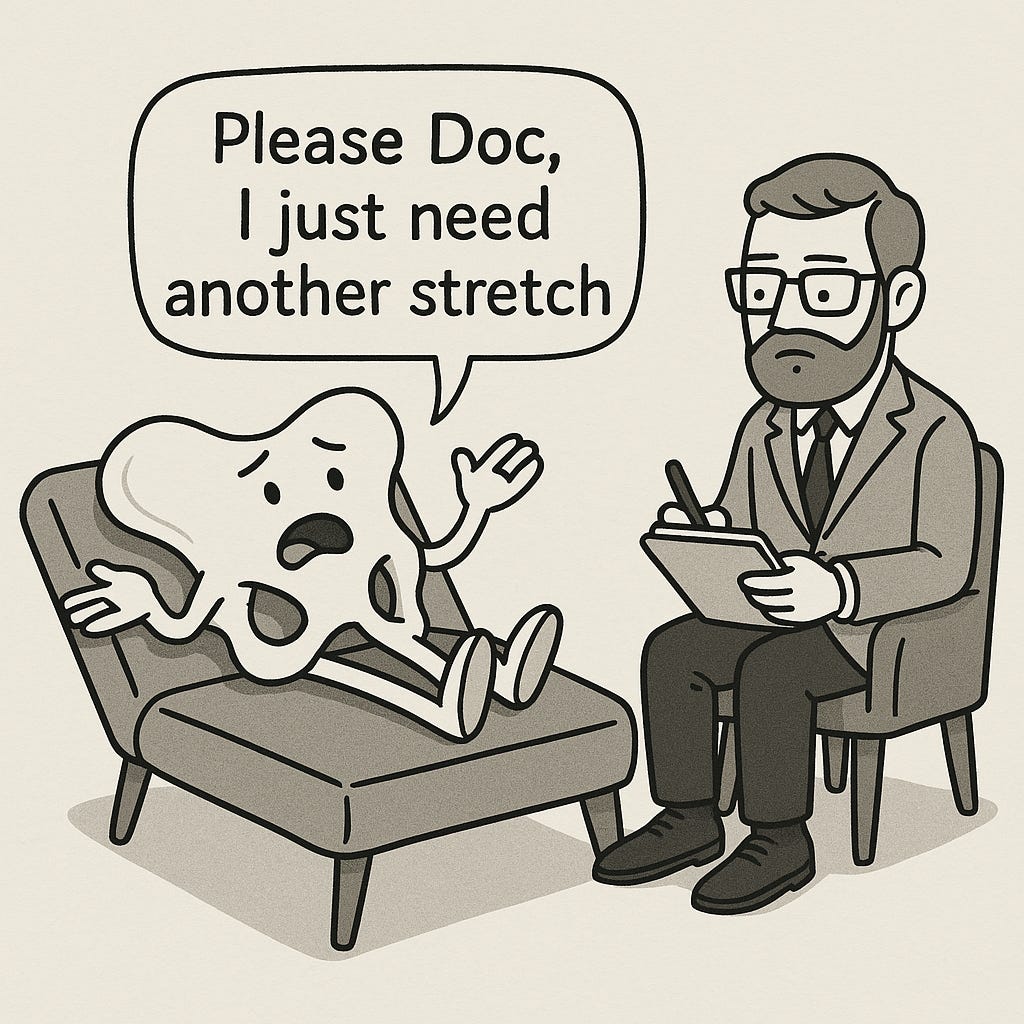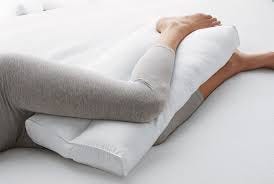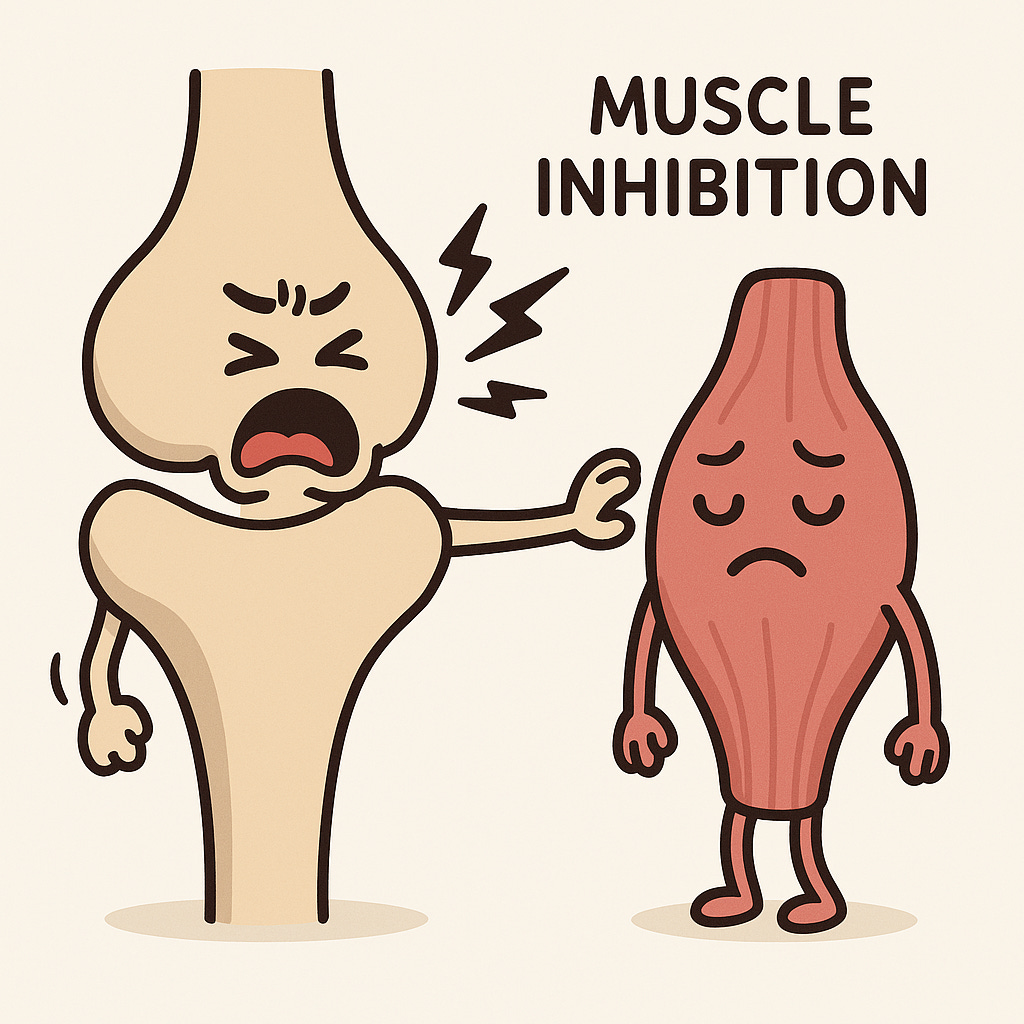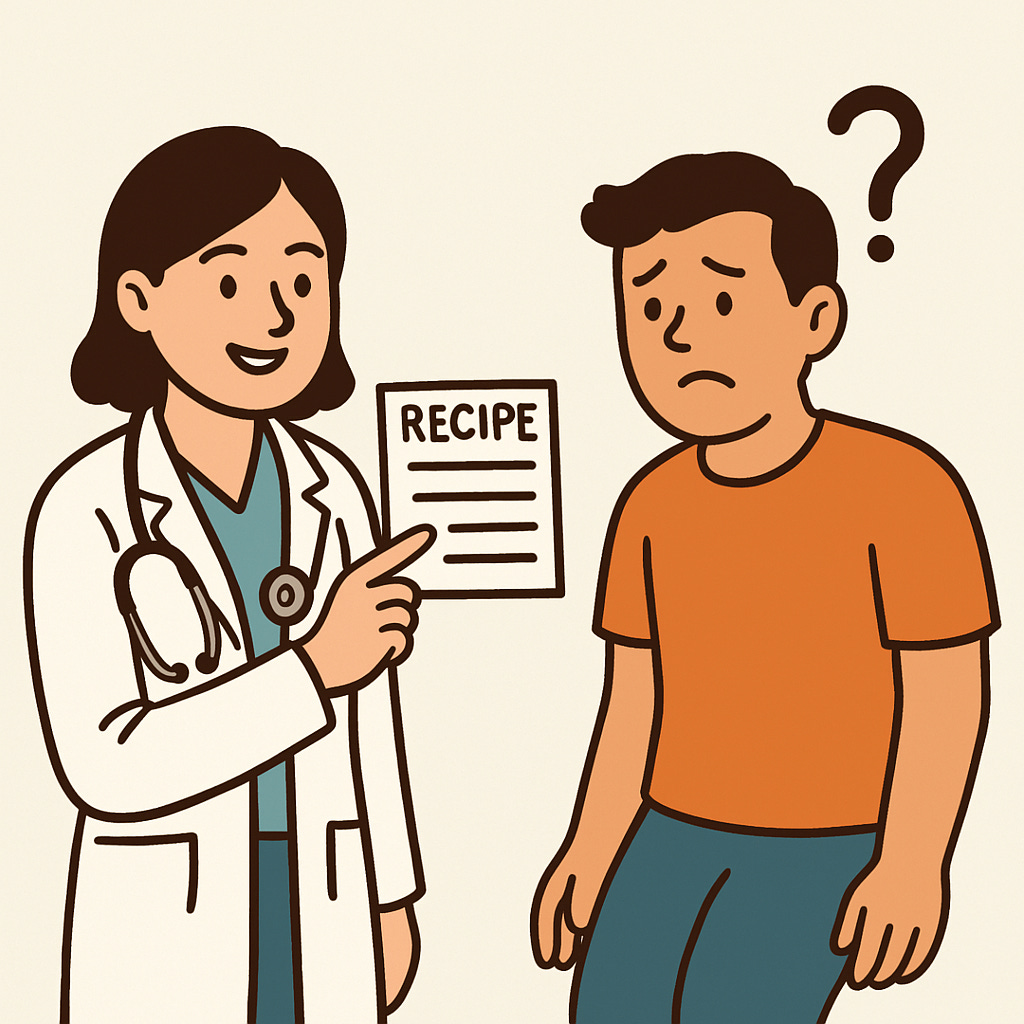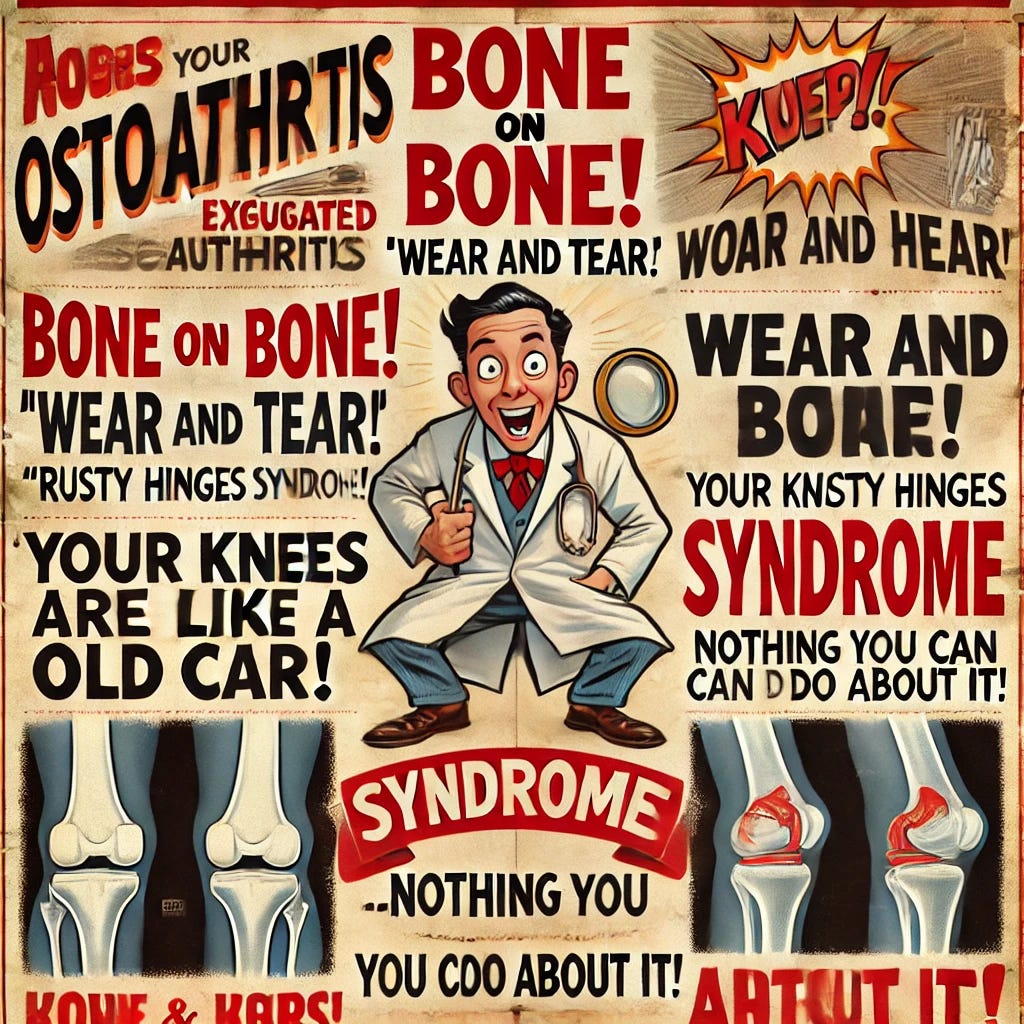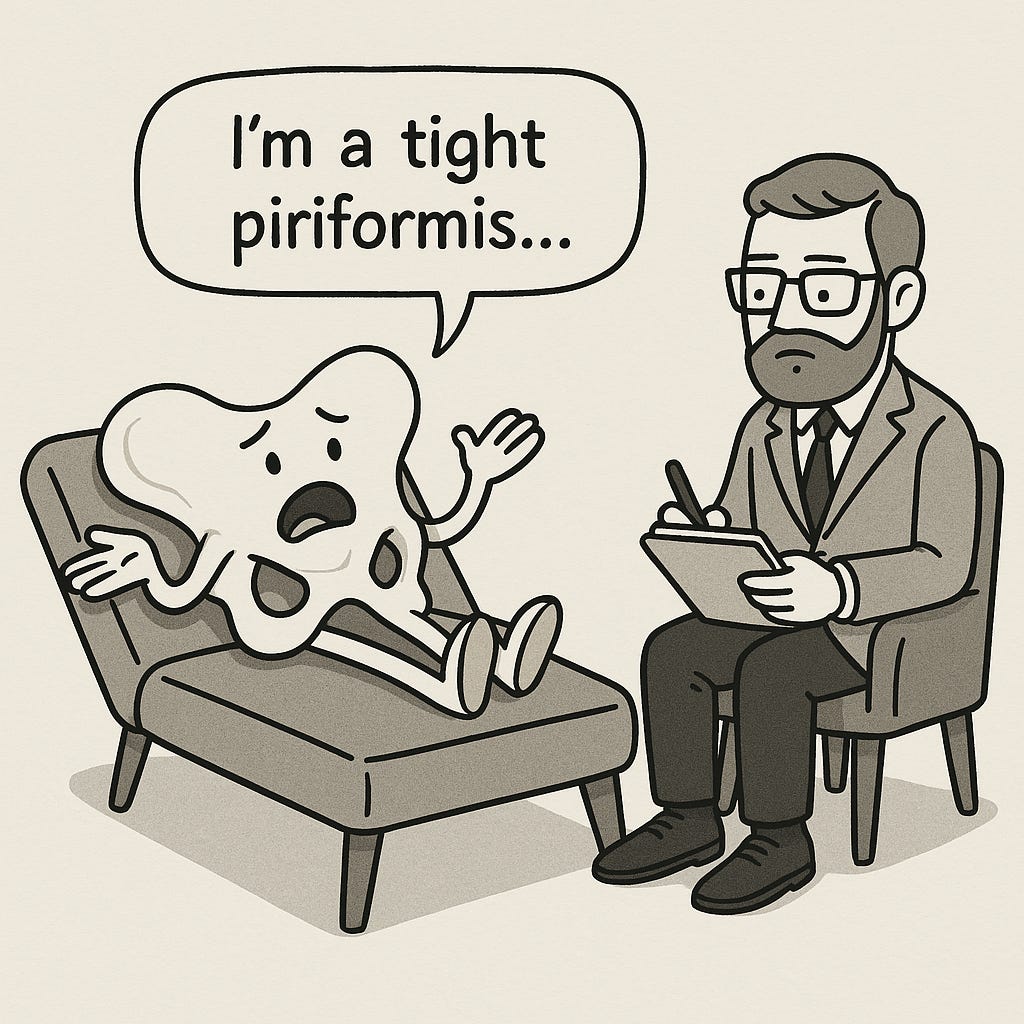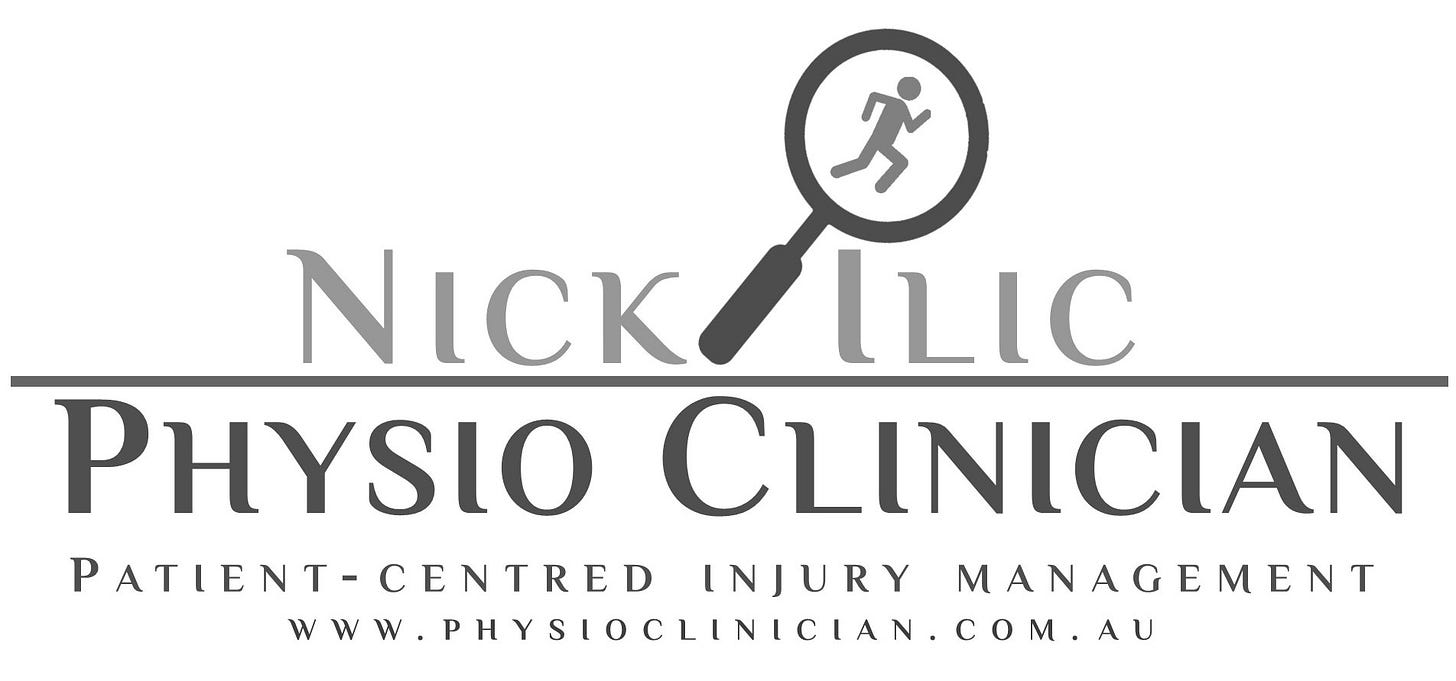Patients Playbook | Hipnosis - When YOUR Hip Joint Is Gaslighting You
When your hip blames everything but itself
On one hand, hip joint pain is one of the most poorly managed conditions in MSK healthcare, and this kind of info is exactly the sort of thing I should be hiding behind a paywall. It’s valuable.
But on the other hand, hip joint pain is also one of the most poorly understood conditions in MSK healthcare—especially by the general public. The myth of “tight hips” continues to derail rehab, and patients end up stretching themselves deeper into dysfunction.
So here you go: there is no paywall on this blog. Just insights I believe are worth spreading—to clinicians, to patients, and to anyone who’s ever had a hip whisper “it’s the flexors” when it was clearly the joint.
💡 If you find this helpful, consider subscribing to my Substack for more in-depth clinical content, exclusive case studies, and professional insights.
This post is a guide only and should not be taken as medical advice. It does not replace assessment and recommendations from a registered and regulated healthcare professional.
Are you a Healthcare Provider? Check out this Clinicians guide:
Ever had pain in your knee, groin, or buttock, only to be told:
"It might be coming from your hip."
Weird, right?
But here’s the thing—your hip joint can be a master of deception.
It’s like that friend who never tells you how they really feel… until they explode.
Why Your Hip Might Be Lying to You
The hip joint sits deep—physically and metaphorically. Unlike the knee, which is obvious when it’s unhappy, the hip whispers... in riddles.
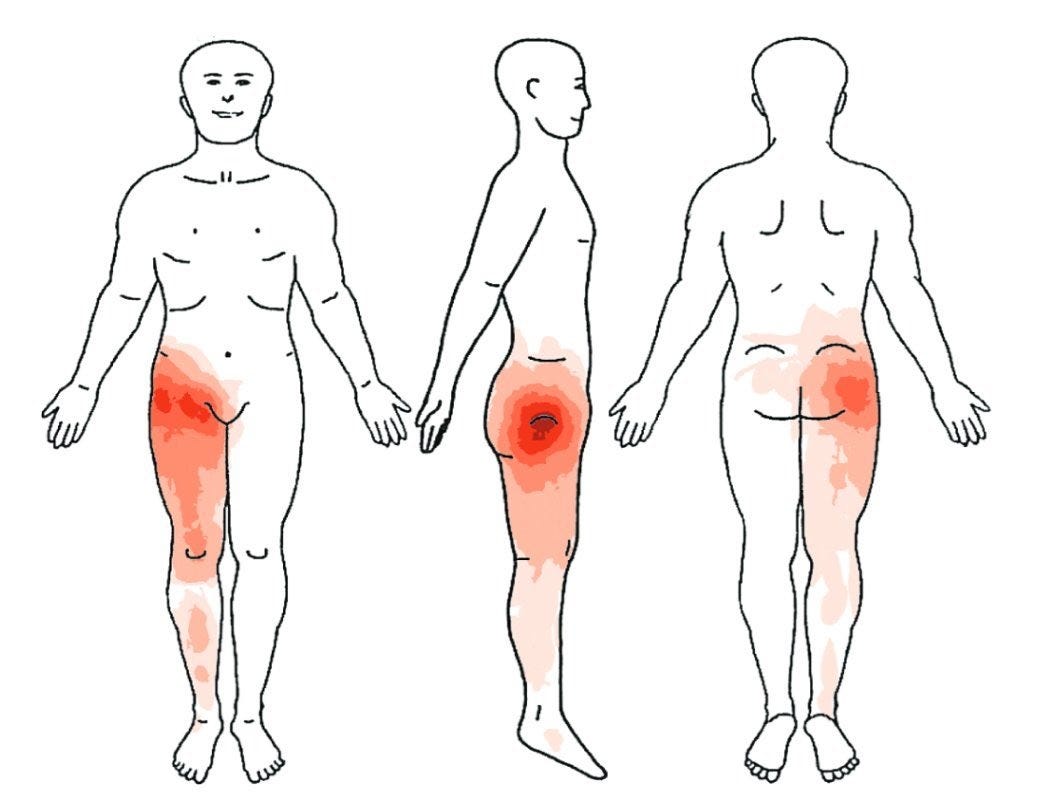
It might feel like:
A sore or tight glute
A twinge in your groin
A sharp jab near the knee
A general ache when sitting too long
But what’s actually going on might be inside the hip joint itself.
The “Tightness” Trap
If you’ve been stretching, rolling, or massaging your hip flexors or glutes for weeks—or months—and it’s still not better, there’s a good chance it’s not a tight muscle.
It could be that your hip joint is inflamed, irritated, or simply unhappy with how you're moving or loading it.
In fact, too much stretching, massage guns, or “smashing it out” can sometimes just poke the angry bear.
Common Clues Your Hip Is Involved
Pain after sitting too long (especially in soft chairs or cars)
You often sit cross-legged, and it feels tight afterwards
You feel better when walking or standing
You’ve had pain in your groin or knee, but scans are clear
None of these confirm the problem is in your hip—but they’re little breadcrumbs that might point in that direction.
So What Can You Try?
The good news?
Many hip issues can improve dramatically with a few simple changes in your day-to-day routine.
Get It Checked (Properly!)
Here’s the truth:
The hip joint is one of the hardest areas in the body to diagnose correctly.
Pain around the hip could be coming from:
Your lower back (lumbar spine)
Your SIJ (sacroiliac joint)
A hip tendon or bursa
Or the hip joint itself
And they all refer pain to similar areas: groin, buttock, or thigh.

It takes a skilled musculoskeletal clinician to untangle that web properly.
If you’ve had pain for a while—and been told it’s “just tightness” with no real progress—get a second opinion.
The right diagnosis can save you months (or years) of chasing the wrong thing. Then once you and your Clinician think it’s most likely the hip you can continue with the below.
Sit Less, Stand More
Hips weren’t built for hours of sitting. They’re made to support us upright, while moving.
If your pain gets worse after car rides, couch time, or long meetings—there’s your clue.
Try standing for phone calls
Use a foam wedge or firm cushion on soft chairs
Get up and move every 30–60 minutes
Track your sitting tolerance—it often improves before pain disappears
Ease Off the Stretching
We know it feels tight. We know every YouTube clip you’ve looked up and every Yogi and Personal Trainer says “STRETCH MORE!”.
But if that tightness hasn’t budged despite stretching, foam rolling, and massage—it’s time to stop scratching the itch.
Sometimes what feels tight is actually protective tension from the joint being irritated.
Stretching into it can stir the pot.
Instead:
Focus on pain-free movement
Avoid deep yoga poses or gym lifts that push the hip to its limits
Let things calm down, and the tightness often settles on its own
Sleeping Hip “Posture”
You shouldn’t have to think about how to sleep. However, in some cases the hip joints can get cranky if they’re allowed to cross over for long periods of time (including for Gluteal Tendon pain).
A long pillow between both the knees and ankles can be worth trialling at night for those who have difficulty at night or pain and discomfort getting up from bed.
What about ‘Exercises!"‘
“Oh Nick...That’s all well and good, but I came here for exercises to make my bits better.”
Yeah, that’s really common.
Here’s the thing: we can give you all the exercises you want, but if you’ve got an unhappy joint, it often creates “weakness” in the muscles around it. That’s called Athrogenic Muscle Inhibition—basically, a cranky joint makes the surrounding muscles switch off. So it’s not “weakness”.
Which is why step 1 is: calm the joint down.
And here’s the cool part—I’ve seen people improve their “strength” on assessment without doing a single exercise, purely because we settled the irritated hip joint.
We use expensive tools like dynamometry to track this (fancy strength-testing gear), because if we “ain’t assessin’ then we’re Guessin’” - and you deserve better than that.
Once things calm down, then we reassess. Then we figure out:
Which muscles are actually weak (as opposed to inhibited)
Which functional movements need attention (if it isn’t functional, it doesn’t matter)
And that’s where the exercises come in.
But we’re not going to hand you a recipe sheet like you’re a sponge cake.
Because you’re not.
Everyone’s different.
Everyone needs different exercises.
We don’t just hand out hip clams to everyone. That’s not exercise prescription. That’s mass production.

So yes—you’ll get exercises. But they’ll be:
Based on a proper assessment
Backed by real measurements
Limited to what’s actually useful for you
No dusty A4 printouts. No generic “hip routine.” Just your recipe, for your cake.
Because your hip deserves better than reheated leftovers from 2012’s filing cabinet.
But What If I Have Hip Osteoarthritis?
Great question—and very common.
Hip osteoarthritis (OA) is a persistent inflammatory joint condition—it’s not just “wear and tear” or your hip being “bone on bone.” It’s more like a slow-burn inflammatory process, influenced by your genetics, lifestyle, and history.
You might notice:
Achy or sharp pain in the hip or groin, especially after activity
Morning stiffness that eases in under 30 minutes
Trouble with movements like putting on socks, crossing legs, or walking uphill
Scans might show things like joint space narrowing or bone spurs—but here’s the kicker: the scan doesn’t tell us how much pain you should be in. Some people have scary-looking X-rays and barely notice it. Others have lots of pain with very little showing up.
We’ve moved on from “BONE ON BONE” and “WEAR AND TEAR” - please… see another Healthcare Provider if you’ve walked away with these messages.
What matters most is how you feel, how you function, and what we can do about it—which is often a lot.
📖 Want to learn more about OA - here’s a Patients guide on it:
Final Thought: Listen Closely
If your body’s sending mixed messages—groin pain, tight glutes, sore knee—but nothing seems to help, it might be time to look deeper.
Sometimes the hip doesn’t scream.
It whispers, misdirects, and gaslights you.
But you’re onto it now. And with the right approach, you can help it settle—and get back to moving like yourself again.

Did this help you understand your pain better or feel more confident about what to do next? If so, even a small contribution helps me keep content like this going.
This kind of information can cost hundreds of dollars in a clinic—but here, I share it freely to help people like you make better decisions about your health.
☕ Buy Me a Coffee to say thanks, or become a paid subscriber to unlock more expert insights—and even ask me questions about your pain directly through subscriber chat.
Tailor your Nick Ilic | Physio Clinician subscription:
You can customise which topics you receive updates for by selecting 'Manage Subscription' in your Substack options (in your browser), or by clicking 'unsubscribe' at the bottom of any email—don’t worry, it won’t unsubscribe you immediately! You'll then be able to choose your preferred sections:
✅ Patient Playbook
✅ Clinician’s Corner
✅ Research Reviews
✅ Clinician’s Compass
Choose what suits you best—I promise I won’t take it personally!






